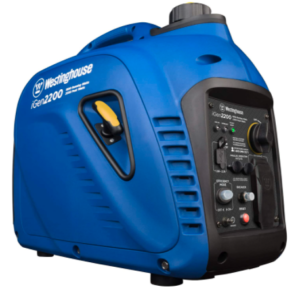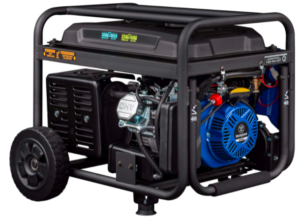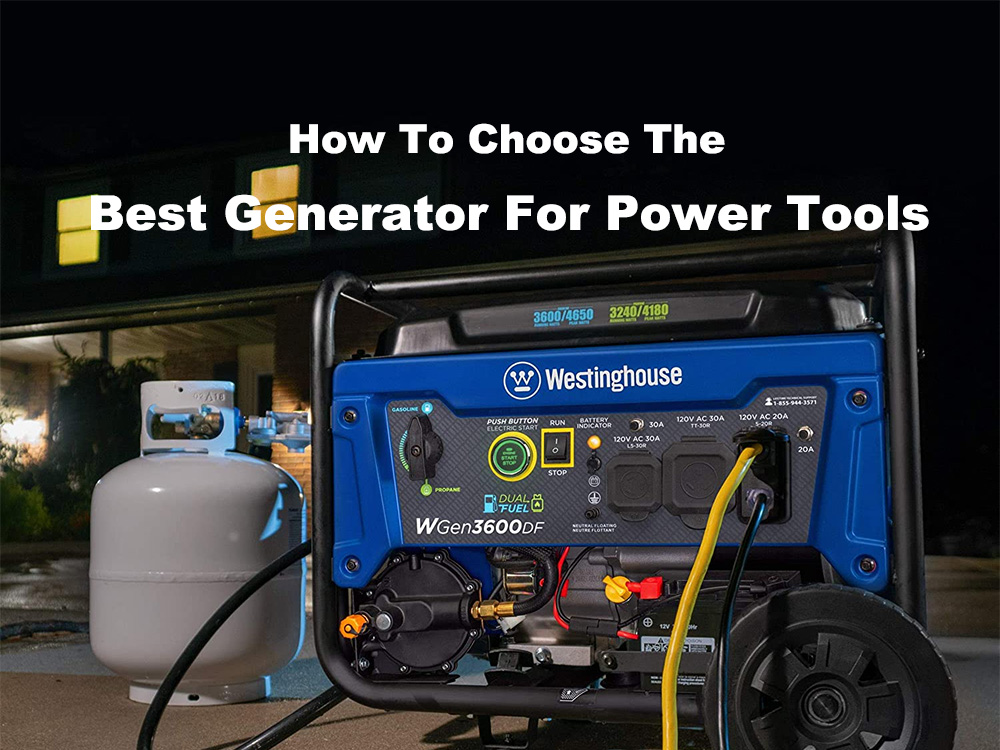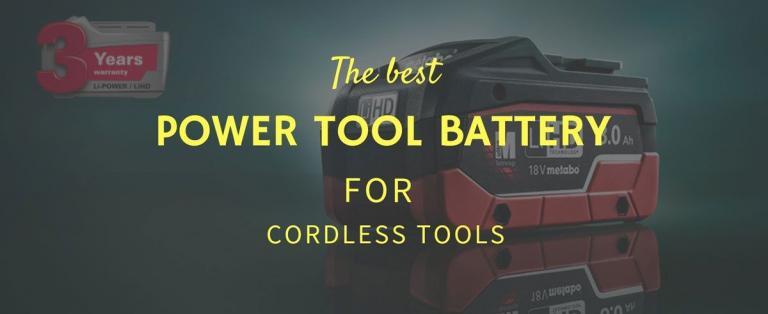If you are looking for a generator for power tools then you are at the right place.
Generators have made using power tools easier than ever before. Now you can use your power tools outdoor without worrying about looking for an electric board. However, finding a good generator for power tools is difficult.
This is where we come in. We have created an easy-to-read guide that will help you find out the right size of generator for power tools that you need. Not only that, at the end of this article we have listed two of the best generators for power tools.
SO, without any further ado, let’s begin.
How much generator wattage do power tools need?
Wondering how much generator wattage your power tools need? Well, here is a simple way to find that out.
The power tools are powered by amps and volts. In order to find out the amps of your power tool, check the nameplate of the tool. This nameplate is usually located on the motor housing or the tool body. Find out the volts and amps required by each power tool that you are planning on using and make a list.
The usual amperage required for small power tools (jigsaw, sander, etc.) is from 2 to 8 amps. For larger power tools such as a table saw, circular saw, router, circular saw, lathe, etc. 6 to 16 amps are typical. Some tools such as air compressors or duct collectors may need even more power.
The continuous running wattage requirement can be 3 to 4 times greater than the starting wattage requirement. So, you need to take that figure into consideration as well.
With that said, the following is the formula you can use to calculate your power tools’ wattage requirement quickly.
Small power tools wattage requirement = 2A to 8A x 110W x 3 times = 660 W to 2640 W
Larger power tools wattage requirement = 6A to 16A x 110W x 3 times = 1980 W to 5280 W
Once you have figured out the wattage requirement for all of your power tools, add them up. The final number you get s the minimal wattage you need to run all of your essential power tools simultaneously.
For example,
If you are planning on using your 2 HP table saw (1725 W) along with your 2 HP air compressor (2800 W) then your power tool wattage requirement would be 1725 + 2800 = 4252 W.
However, instead of getting a 4252 W generator, look for a generator with higher wattage output. Because, in the future, you might need to run some additional tools with the current tools. And having some additional wattage will save you from buying a separate generator altogether. In other words, in a situation like this get a 4,500 W or maybe a 5,000 W generator for power tools.
So, make a list of your own power tool wattage requirement and figure out which size of generator you need for your power tools.
Common power tools wattage load chart
To ensure that you are getting the right generator for your power tools it is necessary to know the amount of wattage that you would need. If you end up choosing the wrong generator then it might not be able to run the power tools that you want. For instance, Westinghouse iGen2200 can run a ton of power tools. But if you need to run an air compressor then you might need something with a higher wattage supply such as 3600 Champion.
Here is a simple common power tool wattage load guide that might help you understand your wattage need.
| Power Tool | Running Watts | Surge Watts |
| 0.25 HP Air compressor | 975 W | 1,600 W |
| 0.5 HP Air compressor | 1,000 W | 2,000 W |
| 1 HP Air compressor | 1,600 W | 4,500 W |
| 1.5 HP Air compressor | 2,200 W | 6,000 W |
| 2 HP Air compressor | 2,800 W | 7,700 W |
| Bench Grinder | 1,400 W | 2,500 W |
| Belt Sander | 1,200 W | 2,400 W |
| Circular Saw (7.25”) | 1,400 W | 4,200 W |
| Chain Saw 12” (1.5 HP) | 900 W | 0 W |
| Concrete Vibrator (0.75 HP) | 850 W | 1,900 W |
| Concrete Vibrator (1 HP) | 1,100 W | 2,500 W |
| Cultivator (1/3 HP) | 700 W | 1,400 W |
| Electric Drill | 600 W | 900 W |
| Electric Mower | 1,500 W | 0 W |
| Electric Strimmer | 300 W | 500 W |
| Disk Sander | 1,200 W | 2,600 W |
| Impact Wrench (1″) | 1,200 W | 1,400 W |
| Miter Saw (10″) | 1,800 W | 1,800 W |
| Jig Saw | 300 W | 300W |
| Orbital Sander | 1,200 W | 2,600 W |
| Pressure Washer (1 HP) | 1,200 W | 3,600 W |
| Rebar Cutter (1″) | 2,800 W | 0 W |
| Radial Arm Saw | 2,000 W | 2,000 W |
| Table saw (2 HP) | 1725 | – |
What’s the best generator for power tools?
Now that you know how to select a generator for power tools, here are two of the best generators for power tools in the market. Both of these generators have a 4-stroke engine which offers 50% more efficiency than a 2-stroke engine. However, the main features of these generators are quite different, so let’s review them both and see which one fits your needs better.
Westinghouse iGen2200 generator for small power tool
The Westinghouse iGen2200 generator offers an 1800 watts output on average. However, the peak output can reach up to 2200 watts. This wattage output makes the Westinghouse iGen2200 generator good for small power tools such as electric drills, electric lawnmowers, etc.

This generator has 2 120V 20Amps outlets, so, you can easily plug in two small power tools and run them simultaneously without any problem. The generator also features 2 USB outlets which can be used to charge phones.
One of the main disadvantages of gas generators is that they are often noisy. However, the Westinghouse iGen2000 generator offers a quiet (52 dBA noise) experience to its users.
In terms of fuel usage, this generator is efficient. It can run for up to 12 hours with only 1.14 gal(4.3L) of gas. Moreover, the generator also features an “Economy Mode” which increases the efficiency of the device even more.
Lastly, if you love the features of this generator for power tools but think the wattage output is too low, don’t worry. The Westinghouse iGen2200 is parallel capable and can be linked with a similar generator to increase the overall wattage output.
Why is this generator good for power tools?
Check Today Price and Deal Now
Champion WGen3600DF generator for larger power tool
What if you want a generator for larger power tools? Well, we have the perfect product for that a well.
The Champion WGEn3600DF generator is rated at 3240 watts running wattage output and 4650 peak wattage output on propane. However, this generator for power tools is able to run on propane as well as gasoline. And the output for gas fuel is 3600 watts running wattage and 4650 peak wattage.

The Champion WGEn3600DF generator is extremely convenient to use. First of all, it has a fuel gauge in the gallon fuel tank. This gauge helps you calculate the amount of fuel the generator lacks. Secondly, this generator has a remote start button which you can use to turn on/off your generator for power tools from a distance. Lastly, the electric push-button makes running on the generator easy.
Furthermore, the Champion WGEn3600DF generator comes with a user’s manual, tool kit, oil funnel, and oil. Not only that, this generator needs minimal assembly in terms of battery hookup and wheel installation.
Lastly, the 4-stroke engine of Champion WGEn3600DF generator is made of cast iron and hence long-lasting.
Why is this generator good for power tools?
Check Today Price and Deal Now
Conclusion
Good generators for power tools are hard to come by. One of the main reasons why the majority faces problems choosing generators for power tools is because they do not know what makes a generator suitable for running power tools.
However, after readings today’s guide you would be able to select the perfect generator for power tools. All you need to do is calculate the amount of wattage output you need and then get a generator that matches your need.




